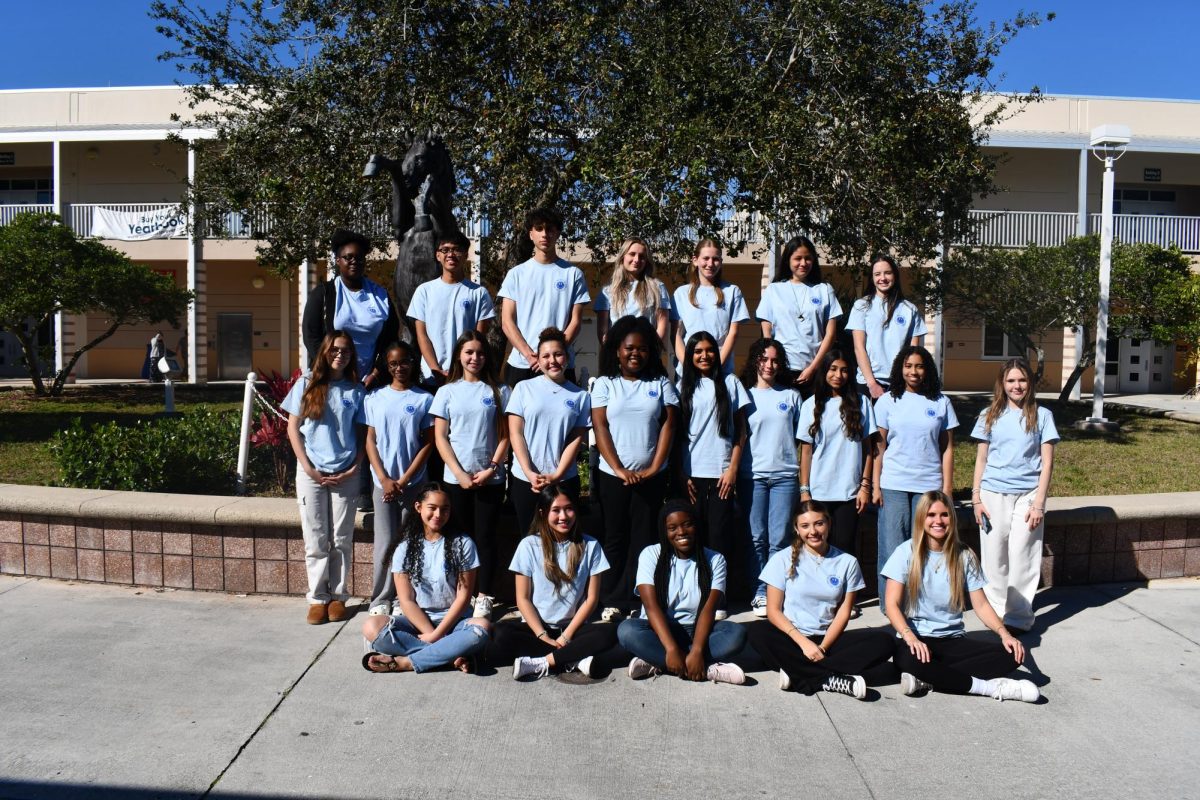Community COVID health initiatives jab at safety questions, concerns
May 18, 2021
A vulnerable community meets a deadly virus meets a race for the end of the pandemic. While pharmaceutical companies raced to find a COVID-19 vaccine, their short timeline raised questions and concerns over the safety of the shot.
The US timeline began on January 21, 2020, the Center for Disease Control pinpointed the first case of COVID-19 in the US. On February 3, the US declared a public health emergency. Around mid-March, then-president Donald Trump declared a national emergency to release billions of dollars to contain the virus as numbers soared in the US. A short time later in July, the Massachusetts-based Moderna began the first large-scale human trials of a vaccine. Fast forward to December 11, when Pfizer, a competing pharmaceutical company, is awarded the first emergency use authorization from the FDA. A few days later on the 14th, Sandra Lindsay, an ICU nurse at a Long Island medical center, becomes the first recipient to receive a COVID vaccine in the US.
“I trust science,” Lindsay noted after the historical moment. “What I don’t trust is getting Covid-19, because I don’t know how it will affect me and the people around me.”
While many different COVID-19 vaccines have been approved throughout the world, as of today, the United States has issued emergency authorization for three vaccines: Pfizer, Moderna, and Johnson & Johnson. Considering that most vaccines from the time of their conception to governmental approval can take between 10-15 years, the swiftness of these COVID vaccines being released has many wondering about the safety of the shots.
“I was a little nervous because it was something so new,” explained junior Brightman, who received her first COVID vaccine in April. “But they’ve been giving shots for a few months, so I felt better.”
In the beginning, vaccine appointments were granted according to exposure and vulnerability. Health care employees and frontline workers such as nurses, doctors, and emergency personnel were given priority followed by those in the community with compromised immune systems such as the elderly and cancer patients undergoing treatment. By April 5, 2021, Florida Governor Ron Desantis opened the vaccine to everyone.
According to the CDC’s data, as of June 7, over 8.7 million Floridians, just over 40 percent, have been fully vaccinated. In the US, 43 percent of the population is considered fully vaccinated.
Up until now, most of the information coming out for COVID pertained to the 18 and over population. At the beginning of the pandemic, children were considered the least vulnerable representing only 14 percent of all COVID cases. Their likelihood of dying was very low in comparison to adults, so little attention was given to their needs for a vaccine. Children can, however, become infected and pass the virus onto others. As infection rates go up for children, the CDC’s focus on vaccinations has shifted to children as young as 12.
As of now, the vaccine developed by Pfizer-BioNTech is the only vaccine approved for individuals aged 12 and up, and Moderna and Johnson and Johnson are available for those aged 18 and up. Pfizer is expected to request emergency authorization from the FDA for ages 2-11 around September, while Moderna and J&J are still conducting clinical trials for ages 12-15. Those aged 12-17 must have a parent or guardian accompany them to their appointment.
“It seemed exactly like buying concert tickets,” added Brightman when discussing how her family scheduled her appointment. “My mom was put into a virtual queue before getting an appointment.”
People are considered “fully vaccinated” 2 weeks after receiving the second dose of the Pfizer or Moderna vaccine or 2 weeks after the first and only dose of the Johnson & Johnson vaccine. The time between the first and second Pfizer shots is 21 days, and the time in between the 2 Moderna shots is 28 days.
While recent CDC guidelines recommend all individuals to keep their masks on in all modes of public transportation, the regulations allow for “fully vaccinated” individuals to “participate in indoor and outdoor activities, large or small, without wearing a mask or physical distancing.” Despite regulations, officials continue to warn that vaccines don’t 100% eliminate the risk of COVID-19, and individual businesses and PBC schools continue to enforce mask mandates as of June. Researchers are still studying the vaccine’s effectiveness on the COVID-19 variants as well as how long immunity lasts.
Each vaccine has been touted by the CDC as being a safe and highly effective tool. During the trials, the Pfizer vaccine showed a 95 percent efficacy rate, in other words, Pfizer was 95 percent effective in preventing the COVID-19 illness after the second dose. The Moderna vaccine was 94.1 percent effective, and the Johnson and Johnson vaccine had a 74 percent efficacy in U.S. clinical trials.
Despite the varying percentages, scientists have remarked that it is hard to compare the 3 vaccines to one another because of the differences between clinical tests that provided those efficacy numbers. For example, Pfizer and Moderna were being tested and measured before the emerging variants became widespread and J&J was done after, which may have impacted these numbers.
“What I tell my patients and family members is to take whatever vaccine you can get. They’re all highly effective,” explained Mark Mulligan, MD, Professor at NYU Grossman School of Medicine in an interview with AAMC.org. “You can’t really make any discernment from one to another.”
There have been some drawbacks in vaccine efforts. On April 13th, the U.S recommended a pause of the single-shot Johnson & Johnson Vaccine due to reports of six women receiving blood clots within 2 weeks of receiving the shot. Vaccine officials have reassured the public that these events are extremely rare, with 28 out of 8.4 million of those who received the vaccine having these adverse effects as of May 27th, and have stated the halting (that lasted 11 days) had been “out of an abundance of caution” and to provide time to investigate. Officials worried that this will increase misinformation and vaccine hesitancy within the general public.
“I was a little bit nervous before getting my shot because I got it right after the Johnson and Johnson issue with the blood clots came out, but everything turned out good in the end,” said junior Leger. “Getting my shot was super easy, but for about two days afterward my arm was really sore. I had a slight headache and I was really tired as well but that went away after a day or two.”
According to the Centers for Disease Control and Prevention, some common side effects include arm pain, tiredness, and fever, among other ailments that likely go away within a few days. The CDC also reports that side effects tend to be more extreme after the second shot than the first.
After an initial boom in the number of people receiving vaccines in April, the U.S demand for shots began to slow down by May. Researchers attributed this “vaccine hesitancy” to the population’s doubts about the safety of the shots, which was fueled by false information linking the shots to unproven side effects such as infertility. In response to this, local governments and businesses have used incentives to encourage vaccinations throughout the country.
A common misconception involves the belief that any of the vaccines give you a dead or weakened version of COVID-19. However, both Pfizer-BioNTech and Moderna use mRNA to deliver “instructions” to build protection against COVID-19. The J&J vaccine instead uses a viral vector, which is essentially a “harmless adenovirus,” to create similar instructions. This does not interact with your DNA in any way.
After receiving the first shot, everyone is given a Vaccination Record Card as confirmation. Officials recommend taking a photo of both sides of the card to provide safe documentation and to keep the original copy safe with other important documents such as birth certificates. Officials warned to not laminate the card (in the event you need to update information for boosters or 2nd doses) and to avoid sharing a photo of it on social media to protect yourself from scammers.
Digital proof of vaccination for travel and businesses, which is being mainly referred to as vaccine passports, is being explored in the U.S. However, Florida Governor Ron Desantis has issued an executive order banning vaccine passports in Florida and the White House has already rejected the claim that they are planning to issue them federally.
Officials hope that with the increase in those vaccinated, the US will be able to develop herd immunity, which is a point where enough of the community is immune that a virus cannot spread. Scientists believe that this will take 75-85% of the population becoming fully vaccinated, as of June 14, about 41 percent of the US population is fully vaccinated.
“COVID has been a problem for so long,” explained Brightman. “I wanted to help make us achieve herd immunity.”
To learn more, please visit:
https://covid.cdc.gov/covid-data-tracker/#vaccinations
https://www.cdc.gov/coronavirus/2019-ncov/vaccines/index.html



